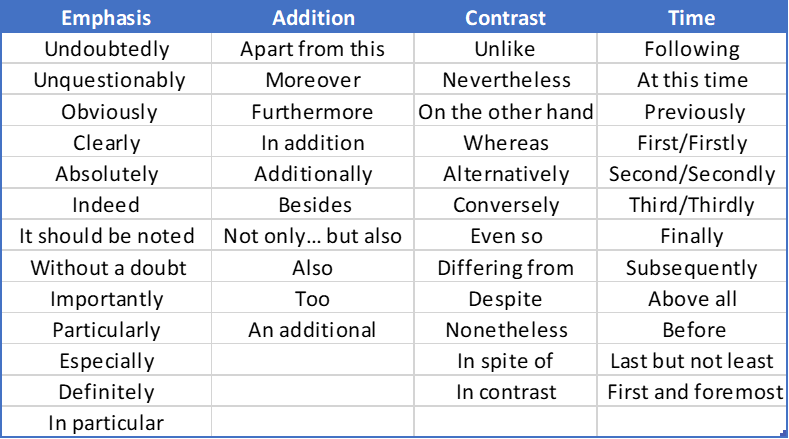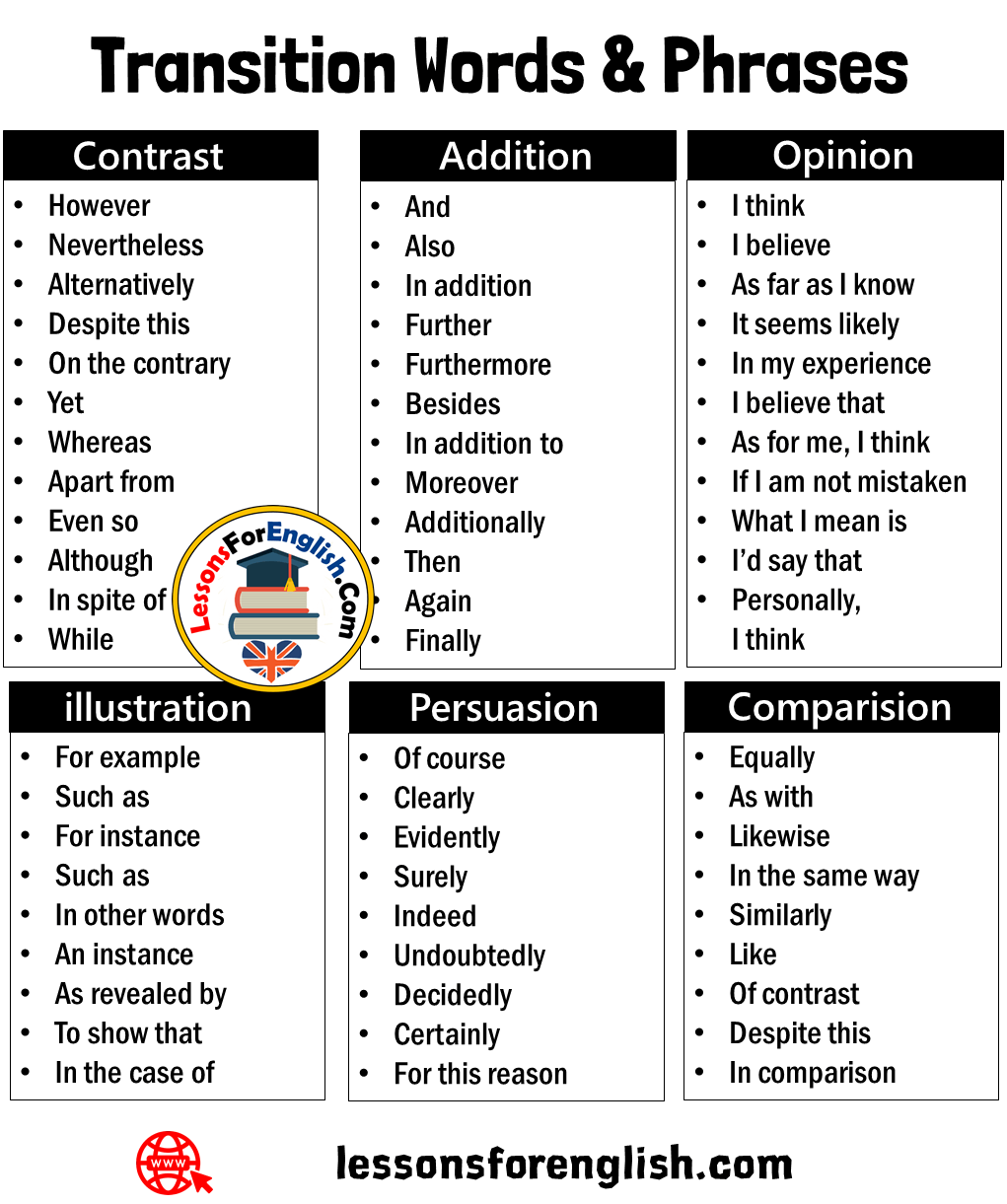

“ Notably, only two species of this fish survive.”“ One example of this phenomenon is X.”Ĭonsidering (this) Concerning (this) Regarding (this)Īs for (this) The fact that With regards to (this) On the subject of (this) Looking at (this information) With reference to (something) Particularly Notably Especially Significantlyįor example/instance To illustrate In particular One example (of this is) “ Furthermore, the data shows that X is a significant factor.”“ In addition to the above-mentioned study, Rogers also presents…” In addition to As well as In fact Not only…but also As a matter of fact PurposeĪlso Additionally Furthermore Moreover These terms signal that new information is being added (between both sentences and paragraphs), introduce or highlight information, refer to something that was just mentioned, add a similar situation, or identify certain information as important. Sequential transitions clarify the order and sequence of information and the overall structure of the paper.Causal transitions point to consequences and show cause-and-effect relationships.Adversative transitions indicate conflict or disagreement between pieces of information.Additive transitions signal to the reader that you are adding or referencing information.We can divide all transitions into four basic categories:

Transitions accomplish many different objectives. Transitions are used to enhance cohesion in your paper and make its logical development clearer to readers. These transitions are usually placed at the beginning of sentences, independent clauses, and paragraphs and thus establish a specific relationship between ideas or groups of ideas. Here are some examples from Bryan Garner.What are transition words in academic writing?Ī transition is a change from one idea to another idea in writing or speaking and can be achieved using transition terms or phrases. Readers, on the other hand, find them helpful in following our train of thought. Being too familiar with our own material, we think they aren’t needed. Explicit connectivesĮxplicit connectives – further, also, however, and therefore - supply transitions.Įxplicit connectives between sentences and paragraphs can be overdone, but more often we simply overlook using them.

If you then begin the next paragraph with “this scarring of the earth,” the words “scarring of the earth” are an echo of the mining process described in the previous paragraph. In the example above, you’ve just written a paragraph about how strip mining removes the top surface of the land to get at the coal under it. They often work together with pointing words. Echo linksĮcho links are words or phrases that echo a previously mentioned idea. If your preceding paragraph describes the process of strip mining, and your next paragraph begins with “this process causes…,” the word this makes a clear connection between paragraphs. Pointing words – including this, that, these, those, and the – refer directly to something already mentioned. Types of transitionsīryan Garner (2001) divides transition words into three types: But a transition word or phrase (usually in the topic sentence) clearly tells the audience whether the paragraph expands on the paragraph before, contrasts with it, or takes a completely different direction. > Organize the information Use transition wordsĪ topic sentence may provide a transition from one paragraph to another. Tips for starting a plain language program.Place the main idea before exceptions and conditions.


 0 kommentar(er)
0 kommentar(er)
